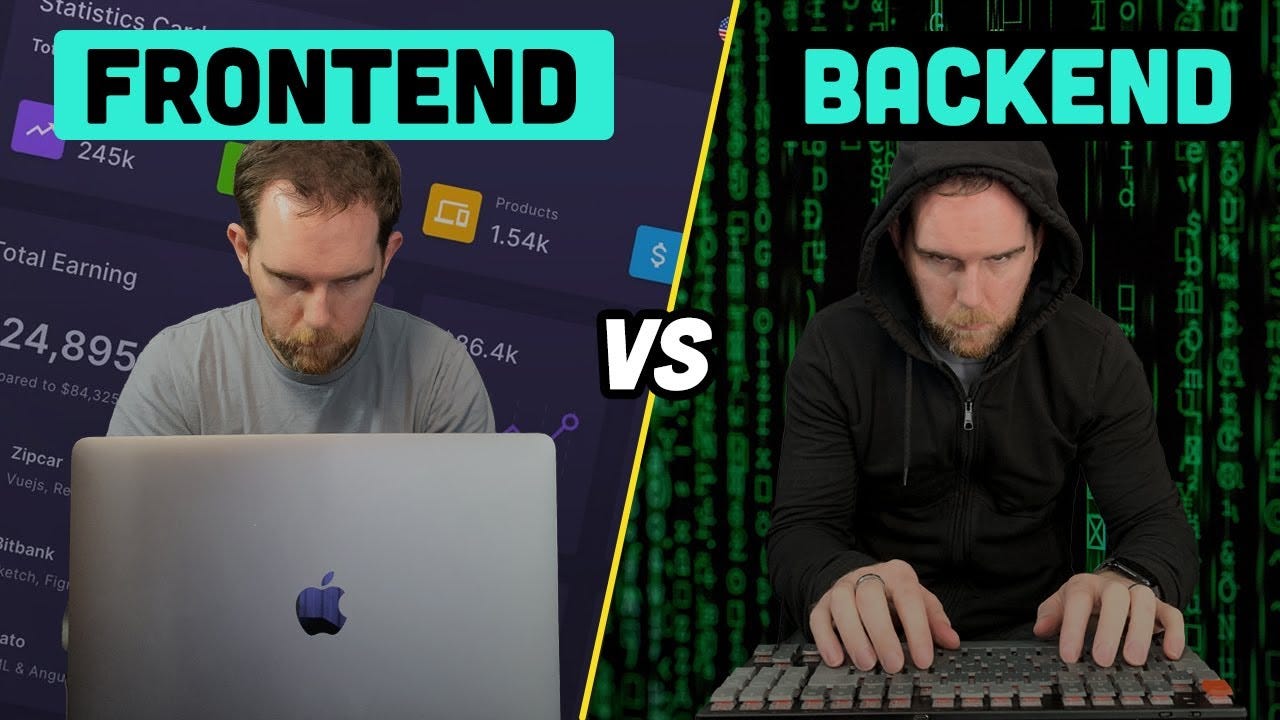Exploring Backend vs. Frontend Development Paths
Technology shapes the modern world, and within the tech ecosystem, software development is the driving force behind innovation. Among its many branches, backend and frontend development are pivotal, forming the backbone of digital experiences. Both are distinct paths, each offering unique opportunities and challenges for aspiring developers. 
This article dives deep into backend and frontend development to help you understand their roles, skills, and which path may align better with your aspirations.
Defining the Core: Backend vs. Frontend Development
Backend and frontend development are two halves of a whole, seamlessly working together to create functional and visually appealing applications. Here’s a closer look at their differences:
Frontend Development
Frontend development focuses on the visible parts of a website or application—the user interface (UI). It encompasses everything users interact with, such as buttons, menus, animations, and layouts. Frontend developers work with tools like:
HTML, CSS, and JavaScript: The foundation of any web page’s design and interactivity.
Frameworks and Libraries: Tools like React, Angular, or Vue.js enhance development efficiency.
Responsive Design: Ensuring the interface works seamlessly across devices.
A key trait of frontend development is the emphasis on creativity, user experience (UX), and visual storytelling.
Backend Development
Backend development, on the other hand, deals with the server-side logic that powers applications. It handles databases, server configurations, and APIs, ensuring that data flows smoothly between the frontend and backend systems.
Core technologies for backend developers include:
- Programming Languages: Such as Python, Java, Ruby, PHP, and Node.js.
- Databases: Including MySQL, MongoDB, and PostgreSQL for storing and managing data.
- Server Management: Knowledge of cloud platforms like AWS, Google Cloud, or Azure.
- Backend development often appeals to those who enjoy problem-solving, working with complex systems, and building robust, scalable solutions.
Key Skills and Traits for Success
The journey into backend or frontend development requires specific skill sets and characteristics. Identifying these can help you decide which path to pursue.
Essential Skills for Frontend Development:
- Visual Design: A strong understanding of color theory, typography, and layout principles.
- User-Centric Mindset: The ability to empathize with users and design interfaces that meet their needs.
- Mastery of Tools: Familiarity with design software like Adobe XD or Figma complements coding skills.
Essential Skills for Backend Development:
- Analytical Thinking: Solving technical problems and optimizing system performance.
- Security and Data Management: Building secure systems that safeguard user data.
- Knowledge of APIs: Designing and consuming APIs for seamless communication between systems.
Shared Traits Across Both Paths:
- Adaptability: Technology evolves rapidly, so staying updated is crucial.
- Collaboration: Developers often work closely in cross-functional teams, requiring strong communication skills.
- Curiosity and Lifelong Learning: Whether frontend or backend, an eagerness to explore and learn is essential.
Choosing Your Path: Which is Right for You?
Determining whether to pursue frontend or backend development depends on your interests, career goals, and natural inclinations.
When to Choose Frontend Development:
- You have an eye for design and enjoy creating visually appealing projects.
- User experience is something you’re passionate about.
- You prefer immediate visual feedback and enjoy crafting tangible results.
Frontend development is ideal for those who thrive on creativity and innovation, blending technology with aesthetics.
When to Choose Backend Development:
- You enjoy working behind the scenes, solving complex problems.
- Systems architecture, data handling, and logic intrigue you.
- You prefer building scalable and efficient solutions over visual design.
- Backend development suits analytical thinkers who prioritize functionality and efficiency over aesthetics.
Career Opportunities and Growth Potential
Both backend and frontend developers are in high demand, but the type of opportunities and growth trajectories can vary.
Frontend Career Landscape:
- Job Titles: Frontend Developer, UI/UX Developer, Web Designer.
- Industries: Frontend skills are widely sought after in industries like e-commerce, entertainment, and digital marketing.
- Emerging Trends: With the rise of Web3 and immersive technologies like AR/VR, the role of frontend developers is expanding.
Backend Career Landscape:
- Job Titles: Backend Developer, Database Administrator, DevOps Engineer.
- Industries: Backend expertise is critical in fintech, healthcare, and enterprise-level application development.
- Future Scope: Cloud computing, microservices, and AI integration offer lucrative backend opportunities.
Salaries and Demand:
According to industry reports, backend developers often earn slightly more due to the technical complexity of their work. However, exceptional frontend developers specializing in cutting-edge frameworks can command competitive salaries.
Bridging the Gap: Becoming a Full-Stack Developer
For those who can’t decide or enjoy both frontend and backend, full-stack development is an attractive option. Full-stack developers are proficient in both domains, allowing them to:
- Handle end-to-end project development.
- Work seamlessly across teams.
- Increase their employability by offering versatile skills.
Learning the full stack requires dedication but can lead to exciting opportunities in startups and dynamic work environments where developers wear multiple hats.
Conclusion
Whether you choose the creative allure of frontend development or the technical depths of backend systems, both paths offer fulfilling and impactful careers. Carefully assess your strengths, preferences, and long-term goals when making your decision. And remember, the lines between these roles are increasingly blurring, with collaboration being more critical than ever in creating exceptional digital experiences.
By understanding the nuances of both paths, you can confidently embark on a journey that aligns with your passion and professional aspirations.
References
- Frontend Development Trends
- Backend Development Salary Insights
- Full-Stack Developer Roadmap
- React.js: Frontend Mastery
- AWS for Backend Engineers
- The Importance of UI/UX in Development
- Emerging Roles in Web Development
- Database Management Best Practices
- Frontend vs Backend: Salary Comparisons
- APIs and Their Role in Modern Development





































